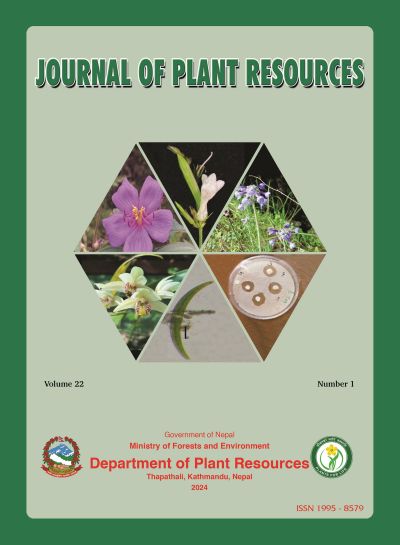Formulation and Evaluation of Topical Cream Enriched with Antimicrobial and Antioxidant Herbs
DOI:
https://doi.org/10.3126/bdpr.v22i1.68349Keywords:
Bioactivity, Box-Behnken design, Extracts, Medicinal plants, Polyherbal creamAbstract
Aqueous extracts of liquorice (Glycyrrhiza glabra L.), mulberry (Morus alba L.) and turmeric (Curcuma longa L.) were used as the main active ingredients in formulated polyherbal topical cream along with other herbal aqueous extracts like neem (Azadirachta indica A. Juss), basil (Ocimum sanctum L.), crofton weed (Ageratina adenophra (Spreng.) King & H. Rob.), mugwort (Artemesia vulgaris Mattf. Paati.), Indian gooseberry (Emblica officinalis Gaertn) and tea (Camellia sinensis L.) were also added. Sweet almond oil, clove oil and tea tree oil were used as oil phase. Vanilla extract was used for the fragrance. Using design expert software (Version 10.0.7, Stat-Ease Inc., Minneapolis, Minnesota), 17 different formulations (F1-F17) were designed by Box-Behnken Design (BBD) with percentage concentrations of liquorice, mulberry and turmeric as independent variables and antioxidant activity, occlusivity test, antimicrobial activity as response variables. The data were analyzed through polynomial equation statistically using a 3-factor, 3-level design. The pH, spreadability and sun protection factor (SPF) of different formulations were measured. It was found that all the formulations had acceptable pH and spreadability. F6 had the best antioxidant property at 500 µg/mL concentration with a value of 82.34% inhibition. The IC75 of the standard ascorbic acid was found to be 198.98 µg/mL. All formulations showed SPF value above 7 but F7 showed the highest sun protection factor (SPF) value of 12.600. The F7 had the best antimicrobial activity against Escherichia coli and Staphylococcus aureus. All formulations showed satisfactory occlusion and stability at different temperature conditions (8ºC, 25ºC and 40ºC). Furthermore, the invented formulation with the combination of the Nepalese herbs can be commercialized by contracting the market traders and manufactures in the future.




